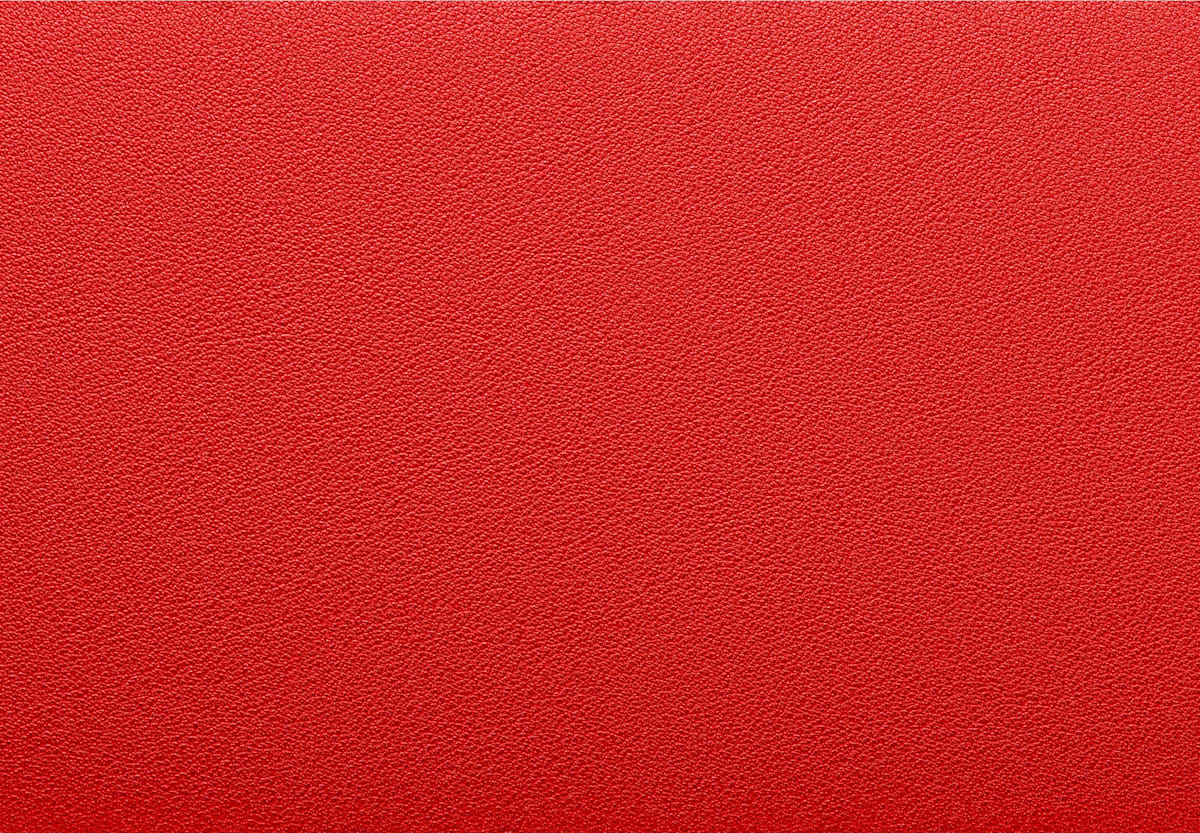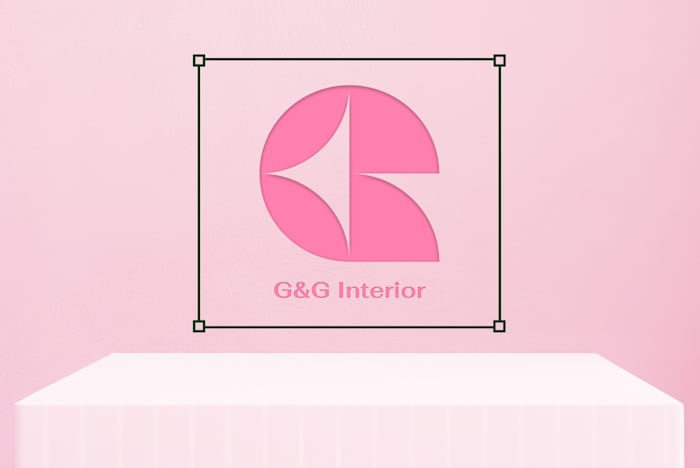Explore the Meaning of Colors and How to Use Them for Your Brand
A practical guide that walks you through the different colors and their meanings in business
 January 11, 2022
January 11, 2022 8 minute reading
8 minute reading
Color is all around us, yet it’s rare that we ever stop and truly examine what each color means. Understanding color meanings in business, however, is crucial, as colors are much more than a fun way to represent your brand.
Colors are one of the most effective non-verbal forms of communication that business owners can use to position their brand in the minds of their target audience. Therefore, understanding how to use the symbolism of colors to your advantage is vital.
In this guide, we’ll reveal what each color means, including how they can help or hinder your business. This will make it easier for you to choose the most relevant and powerful colors for your own brand style guide.
Where do color meanings come from?
To kick things off, let’s embark on a journey back in time and unravel where color meanings come from and the history of color theory.
You may be wondering: what exactly is color psychology? Well, it’s the study of how colors can influence our emotions and behaviors.
The idea of colors having meanings goes way back to ancient times. Ancient Egyptians, for example, believed colors had specific powers and used them for different purposes. The color green was connected with growth and healing, while red was linked with chaos and disorder.
It wasn’t until the 17th century that Sir Isaac Newton invented the color wheel, which evolved into the modern version below. You can explore primary colors, cool colors and warm color properties, monochromatic harmonies, and more.
In the 20th century, Swiss psychiatrist Carl Jung deepened the understanding of color psychology. He believed color could be used to express and understand our deepest feelings and moods. Jung also used color in therapies and suggested that people had color preferences that reflected their personality.
In modern times, marketers, designers, and brands use color psychology to influence how we perceive and interact with different products, logo designs, and advertisements. Take fast food logos as an example. Most of them are red and yellow because these colors are believed to stimulate appetite and grab attention.
Remember, color isn’t just about making things look pretty. It’s a powerful tool that can evoke emotions, complement different types of fonts and typography, and convey messages.
1. Red

(Red symbolizes action, strength, energy, and passion)
Red is a signal that encourages consumers to act fast. It’s frequently used for businesses specializing in products related to passion, love, speed, or energy. With its appetite-stimulating qualities, red is also a popular choice for restaurants or fast-food chains.
The psychology of the color red
Red stimulates passion and also tends to excite us or motivate action. Additionally, it creates a fear response within the brain that forces us to take notice, as we believe we’re being alerted to danger. In different cultures, like China, for example, red stands for good luck and happiness.
The color red has also been known to increase our perception of assertion and aggression. In a study by the Royal Society, for example, men were rated as more aggressive and more dominant when presented in red clothing than when presented in either blue or gray clothing.
Positive meanings of red
Action
Desire
Brave
Invigorating
Ambitious
Exciting
Assertive
Negative meanings of red
Hostility
Anger
Exhausting
Short-tempered
Stubborn
Violent
How to use red
Red is best used as an accent color, as it can tempt website visitors to make an impulse purchase and “buy now.” Red can also draw attention to a particular element on your packaging, as well as portray a business as exciting and energized.
When overused, red can intensify feelings of anger or aggression, therefore it should be used sparingly. The color that complements red the most and balances it out is turquoise. Green and blue are also effective.
Red is popular for:
Food
Technology
Cars
Agriculture
2. Orange

(Orange symbolizes emotion, youth, optimism, and enthusiasm)
Because orange suggests fun and adventure, it’s frequently used for hotels, travel companies, and resorts. It encourages social communication with companies, as it’s more approachable than red.
Depending on the shade and accompanying colors, orange is also used in business to indicate affordability. However, too much orange can symbolize cheapness.
The psychology of the color orange
Orange encourages extroversion as well as appetite. It’s full of vitality and helps to bring our physical and mental energies into balance. Because it increases our courage, orange also encourages us to reflect on our life path, face consequences, and take necessary action.
Positive meanings of orange
Adventurous
Vibrant
Stimulating the senses
Affordable
Enthusiastic
Cheerful
Extroverted
Creative flair
Negative meanings of orange
Superficial
Overbearing
Self-indulgent
Cheap
How to use orange
Orange tends to be the most disliked color in the Western world, so use it sparingly. Because orange stimulates conversation, social connection, and appetite, it’s perfect for use within social media or as a color combination within restaurants, cafés, and pubs.
Due to its sense of energy and adventure, sports teams and travel websites can benefit from using orange within their brand colors. Children and teens also pay attention to this shade for these reasons, so it’s beneficial for companies with younger target audiences.
Orange is popular for:
Technology
Health care
3. Yellow

(Yellow symbolizes happiness, optimism, positivity, and intellect)
Yellow is frequently used in the children’s industry, as it’s fun and stimulates their creativity. In western cultures, it’s the color of joy. It also encourages people to act quickly and is therefore commonly used within the fast-food industry as a secondary color to red (which stimulates appetite).
You won’t see the color yellow representing high-end or luxury brands, however, as it signifies affordability, not luxury.
The psychology of the color yellow
Yellow activates the left or analytical brain, meaning it stimulates our mind and boosts our clarity, recall, and focus. It’s uplifting to our spirits and creates a greater enthusiasm for life. Finally, yellow can assist with communication as well as the expression of new ideas. Too much yellow, however, can motivate people to become overly critical or judgmental.
Positive meanings of yellow
Happy
Playful
Uplifting
Logical
Confidence
Creativity
Logic
New Ideas
Negative meanings of yellow
Critical
Impulsive
Egotistical
Spiteful
Cowardly
Lacking compassion
How to use yellow
Be aware of the shade of yellow you use to represent your business. Bright yellow grabs attention and is useful for highlighting specific areas of a design. Warm yellow provides a warm and healthy aesthetic, while neon yellow can look artificial.
Yellow is popular for:
Energy
Food
Household
4. Green

(Green symbolizes harmony, safety, growth, and health)
The green color represents growth, prosperity, and abundance in business more than any other color. Therefore, dark shades of green perform well on financial websites. It’s also linked to safety in drugs and medicine, so is especially recommended as a brand color for companies within the health and healing industries.
The psychology of the color green
Green rejuvenates the human mind, body, and soul when exhausted. It’s also a color we find nurturing, thus encouraging us to nurture others. It’s a dependable and agreeable color that boosts our ability to be empathetic. Finally, the saying “green with envy” has some merit, as the color can induce feelings of jealousy or the desire to possess more items or money.
Positive meanings of green
Growth
Vitality
Renewal
Emotionally balanced
Nature lover
Down to earth
Nurturing
Negative meanings of green
Materialistic
Envious
Greedy
Devious with money
Inexperienced
How to use green
Green is a perfect brand color for businesses related to natural, eco-friendly, organic, or sustainable elements. Although a green call-to-action button can encourage visitors to “go” or click, red remains a more urgent (and therefore more effective) color for this. To represent nature, use a muted or lighter shade of green. However, steer clear of neon green, as this can appear too artificial.
Green is popular for:
Energy
Finance
Food
Household
Technology
5. Blue

(Blue symbolizes security, trust, loyalty, and responsibility)
Because the color blue conveys trust, honesty, and dependability, it helps to build customer loyalty. It’s often used for more conservative businesses where reliability is vital, such as accountants, insurance companies, banks, and other financial companies.
Generally, it’s used for brands appealing to an adult target audience, rather than children or teens. Additionally, its association with feelings of calmness and tranquility makes it a great fit for brands specializing in meditation, emotional therapy, or relaxation.
The psychology of the color blue
Blue has a calming and tranquil effect on our psyche. It’s a non-threatening and predictable color, thus making us feel safe. It not only encourages feelings of peace and relaxation, but also inspires honesty, wisdom, and devotion in a religious or spiritual setting.
Positive meanings of blue
Trust
Integrity
Caring
Reliability
Perseverance
Authority
Calm
Negative meanings of blue
Rigid
Self-righteous
Emotionally unstable
Too conservative
How to use blue
Brands specializing in technology, medical equipment, or cleaning products should use blue in their branding, website, or product packaging. Blue should not be used for food-related businesses, however, as the color is not naturally associated with food.
Blue is popular for:
Energy
Finance
Airlines
Technology
Healthcare
Agriculture
6. Purple

(Purple symbolizes spirituality, mystery, royalty, and imagination)
Purple is commonly used for products relating to women or children, however, it is slowly becoming more popular for male-targeted products too.
Academic institutions frequently use the color purple to inspire wisdom and intellect, while brands specializing in antiques or handmade items can benefit from purple’s nostalgia. When combined with gold, purple can assist businesses in exuding wealth and luxury.
The psychology of the color purple
Purple fosters harmony of the mind and emotions, promoting mental balance and stability. It also boosts creativity and the brain’s ability to develop original ideas, while stimulating dream activity.
Positive meanings of purple
Creative
Inventive
Intuitive
Humanitarian
Fantasy
Negative meanings of purple
Immaturity
Impractical
Pompous
Fraudulent
Delusions of grandeur
How to use purple
To emphasize a feminine brand, pair purple with pink. Alternatively, brands wishing to convey royal connections or luxury can benefit from teaming purple with rich gold. Even the smallest dash of purple can add mystery or spirituality to branding, while adding green to your color palette can provide a harmonious contrast to the shade.
Purple is popular for:
Finance
Technology
Health care
7. Pink

(Pink symbolizes compassion, love, femininity, and playfulness)
Because of its compassion and warmth, pink is popularly used in branding for charitable organizations. You’ll also frequently see it used by brands marketing their products or services towards women of all ages, though the shade will vary depending on the target audience. Bright pink is used for teenagers and children, while dusky pink appeals to older women.
The psychology of the color pink
Because pink lacks anger or aggression, it has the ability to calm our emotions and encourage feelings of warmth and tenderness. It’s closely tied with sensitivity and care, however, our brains can sometimes associate color with immaturity due to its ties with products aimed at little girls.
Positive meanings of pink
Romantic love
Compassion
Hope
Sweetness
Innocence
Feminine energy
Negative meanings of pink
Over-emotional
Immature
Lack of willpower
How to use pink
Pink can be used in branding to add an unexpected element to your classic design. Doing so can also help you stand out from your competition. For brands wanting to be obvious about appealing to a female market, pink is the perfect color to use. Avoid using pink in a way that appears tacky, however, as this can be off-putting.
Pink is popular for:
Technology
Beauty
Health
Toys
Food
8. Black

(Black symbolizes protection, power, elegance, and sophistication)
Black is often used in branding to increase the perceived value of a product and give it a classy appearance. It’s also seen as edgy and trendy, which is why black is frequently used in products wanting to appeal to the young adult market, such as music, fashion, and technology.
The psychology of the color black
Black can carry heavy or negative energy, therefore too much of it can encourage mood swings or depressive thoughts. For some, it also causes them to fear the future. On a lighter note, wearing black has positive connotations of confidence, dignity, and sophistication.
Positive meanings of black
Authority
Protection
Strong
Formal
Sophisticated
Negative meanings of black
Depressing
Pessimistic
Secretive
Conservative
How to use black
A simple black and white color scheme conveys luxury and minimalism, while combining black with gold, silver, or royal purple communicates luxury and prestige. For additional impact and contrast, pair black with bright colors or dramatic shades of red and orange.
Avoid using too much black in your brand, however, as it can be seen as intimidating.
Black is popular for:
Fashion
Technology
Cars
9. White

(White symbolizes cleanliness, purity, innocence, and perfection)
White is frequently used among brands wishing to portray cleanliness, efficiency, and discipline. Therefore, it's most often used by businesses specializing in baby products, medical practices, and bath or kitchen appliances.
The psychology of the color white
White isn’t as stimulating to the senses as other colors, yet it can encourage feelings of reflection, and creativity. It’s a neutral color that creates a sense of inner peace and calm, therefore helping to relieve emotional upsets. Too much white, however, can encourage feelings of isolation and emptiness.
Positive meanings of white
Innocence
Purity
Cleanliness
Simplicity
Pristine
Negative meanings of white
Sterile
Painstaking
Isolated
Cautious
Boring
How to use white
White space is a necessary component of almost any design. It’s also recommended that brands use white as their website background color to improve readability. Team white with pastel colors to convey femininity or springtime, while pairing the color with black creates a classic and minimalist brand identity.
White is popular for:
Fashion
Health care
10. Gray

(Gray symbolizes compromise, neutrality, control, and practicality)
When combined with other colors, gray can be used across any industry. It’s mostly popular among financial or technology businesses, however, or any brands wishing to convey maturity, professionalism, and respectability.
The psychology of the color gray
The meaning of the color gray is linked to indecision and detachment, due to its neutrality. It’s also an unemotional color, causing a disinterested, cold, and uncaring attitude. Unlike vibrant, popular colors such as red, gray is known to stifle energy, and can also create feelings of isolation or depression.
Positive meanings of gray
Wisdom
Security
Classic
Sleek
Refined
Contemporary
Negative meanings of gray
Boring
Melancholy
Lifeless
Subtle
Cold
How to use gray
Gray is best reserved for serious brands wanting to display their corporate authority. For conservative and dependable associations, pair gray with blue. Gray might also be used as an alternative to a white background in graphic design, or even instead of black text for something less bold.
Gray is popular for:
Automotive
Technology
Petrochemical
Interior design industry
11. Brown

(Brown symbolizes reliability, stability, honesty, and comfort)
Brown is frequently used in the brand colors of businesses relating to men’s products, as well as the outdoors, as its rugged tone doesn’t always appeal to females. Therefore, it’s often seen in earthmoving, landscaping, farming, and organic businesses.
Dark brown is also paired with gold to be associated with luxury men’s goods, such as leather wallets, watches, or belts.
The psychology of the color brown
Brown has the tendency to suppress emotions, thereby reducing stress and offering reassurance. It encourages neatness and organization, as well as material security, which can lead to increased materialism.
Positive meanings of brown
Practical
Down to earth
Reassurance
Strength
Durable
Homely
Wholesome
Negative meanings of brown
Too serious
Unsophisticated
Heavy
Dull
Dirty
How to use brown
Use brown as a background color to convey warmth and wholeness, such as for artisan brands. It can also be paired with green to communicate an earthy or organic feel. Finally, well-established brands should consider using brown, even if in moderation, to reflect their heritage and sense of tradition.
Brown is popular for:
Fashion
Cars
Agriculture
12. Gold

(Gold symbolizes success, triumph, luxury, and abundance)
Gold is often used as a brand color for businesses selling luxurious and expensive products. It’s also frequently used in combination with navy blue or black in brands with men as their target audience.
The psychology of the color gold
Psychologically, gold is linked to enlightenment, as it inspires wisdom, spirituality, and a greater understanding of one’s own self. Gold also inspires feelings of generosity or sharing, both through material possessions and the desire to offer knowledge to others.
Positive meanings of gold
Wealth
Prosperity
Abundance
Opulence
Victory
Prestige
Negative meanings of gold
Self-importance
Overwhelming
How to use gold
When using the color gold online, businesses should be cautious to replicate the color perfectly, either using shading or highlighting. Otherwise, your gold may look dull yellow. To achieve the gold look on printed materials, brands can consider using gold foil for a metallic sheen. If in doubt, however, gold and black are great color pairings that represent luxury and elegance.
Gold is popular for:
Fashion
Gourmet foods
Entertainment
Automotive
13. Silver

(Silver symbolizes femininity, fluidity, sensitivity, and mystery)
Brands within the future, science, or technology industries often use silver in their packaging or branding because of the sleek and lustrous look it creates. Because of its ties with female energy, prosperity, and modernity, it’s also not uncommon to see the color used by businesses with female target audiences.
The psychology of the color silver
Silver assists with the release of mental, physical, and emotional issues that may be preventing a person from moving forward. It encourages reflection, as well as sensitivity, and can be useful with mental telepathy. Its lightness is more uplifting than gray.
Positive meanings of silver
Modern
High-tech
Elegant
Balancing
Imagination
Wealth
Illumination
Negative meanings of silver
Cold
Impersonal
Fence-sitting
How to use silver
Similar to gold, the metallic look of silver can be achieved online by using shading and highlighting. Alternatively, brands can use silver foil in their print marketing to convey a more authentic silver color.
Because of silver’s neutrality, it can easily be paired with any other color within your brand palette. Businesses wishing to reflect high-quality artistry would particularly benefit from using silver within their branding.
Popular for
Internet
Technology
Watchmaking
Electronics
News media
Video game industry
Using color symbolism in your business
Our favorite colors have a subconscious yet profound effect on every aspect of our lives. They’re especially powerful due to their ability to convey certain messages to people, without the need for written or verbal communication.
By carefully choosing your brand’s palette based on the different meanings color conveys, you dramatically increase your chances of success. After all, the right colors can attract your target audience, get more eyes on your products, and present your brand in the best possible light.
Color meanings FAQ
What do different colors symbolize?
Specific colors symbolize different things. For example, red often stands for excitement and passion, while light blue can mean trust and reliability. Green typically symbolizes nature and growth, while yellow is linked with happiness and energy, and black can represent power or elegance.
What does each color mean emotionally?
Red: Excitement, passion
Orange: Enthusiasm, creativity
Yellow: Happiness, energy
Green: Growth, peace
Blue: Trust, calmness
Purple: Luxury, creativity
Pink: Affection, tenderness
Black: Power, sophistication
White: Purity, simplicity
Gray: Neutrality, balance
Brown: Stability, comfort
Gold: Wealth, success
Silver: Sophistication, modernity
What do the 5 colors represent?
The “five colors” can mean different things in different contexts, but typically, they might refer to common colors like red, blue, and yellow (the primary colors), and green and purple (secondary colors). Red stands for excitement, blue for trust, yellow for energy, green for growth, and purple for creativity or luxury.
Which colors mean strength?
Colors that represent strength often include bold, powerful colors like red, black, and dark blue. Red signifies power and determination, black exudes authority and sophistication, and dark blue can convey trustworthiness and stability.


